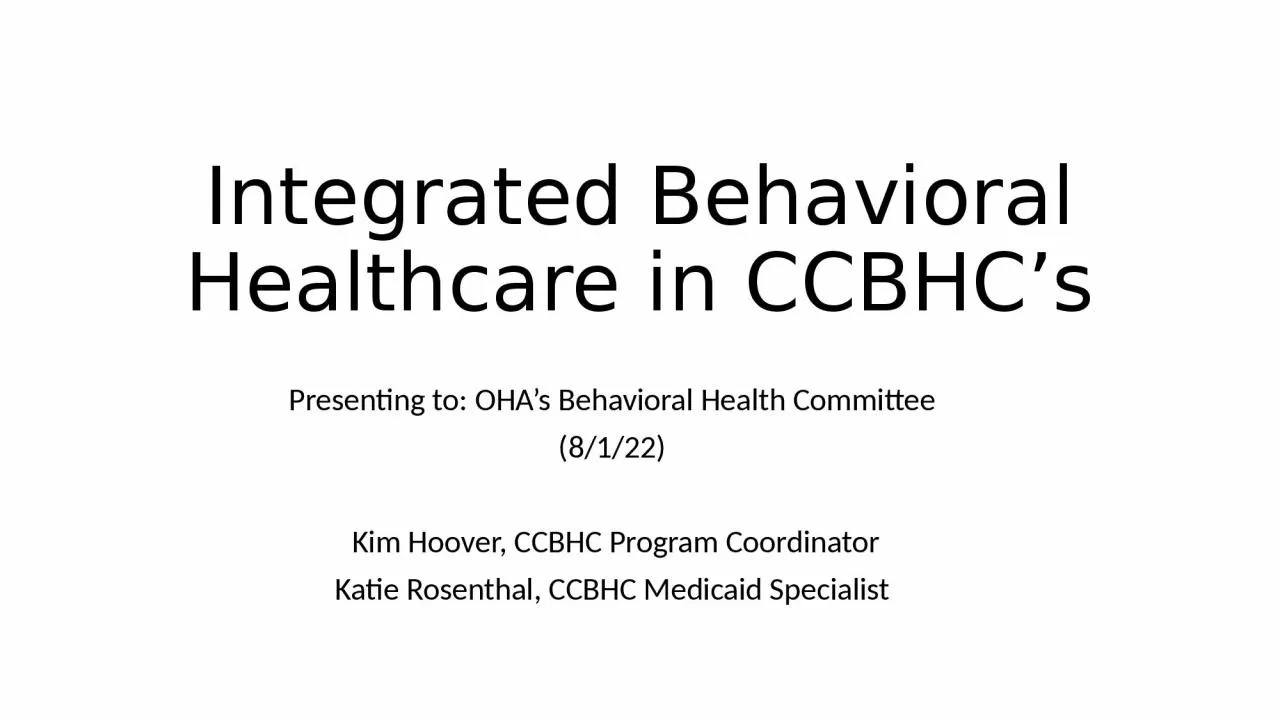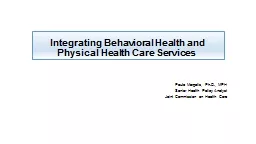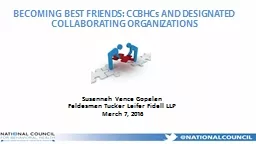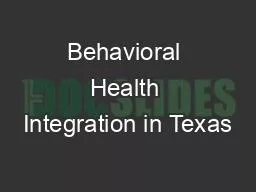PPT-Integrated Behavioral Healthcare in CCBHC’s
Author : cady | Published Date : 2024-01-13
Presenting to OHAs Behavioral Health Committee 8122 Kim Hoover CCBHC Program Coordinator Katie Rosenthal CCBHC Medicaid Specialist How did we get here Many global
Presentation Embed Code
Download Presentation
Download Presentation The PPT/PDF document "Integrated Behavioral Healthcare in CCBH..." is the property of its rightful owner. Permission is granted to download and print the materials on this website for personal, non-commercial use only, and to display it on your personal computer provided you do not modify the materials and that you retain all copyright notices contained in the materials. By downloading content from our website, you accept the terms of this agreement.
Integrated Behavioral Healthcare in CCBHC’s: Transcript
Download Rules Of Document
"Integrated Behavioral Healthcare in CCBHC’s"The content belongs to its owner. You may download and print it for personal use, without modification, and keep all copyright notices. By downloading, you agree to these terms.
Related Documents














